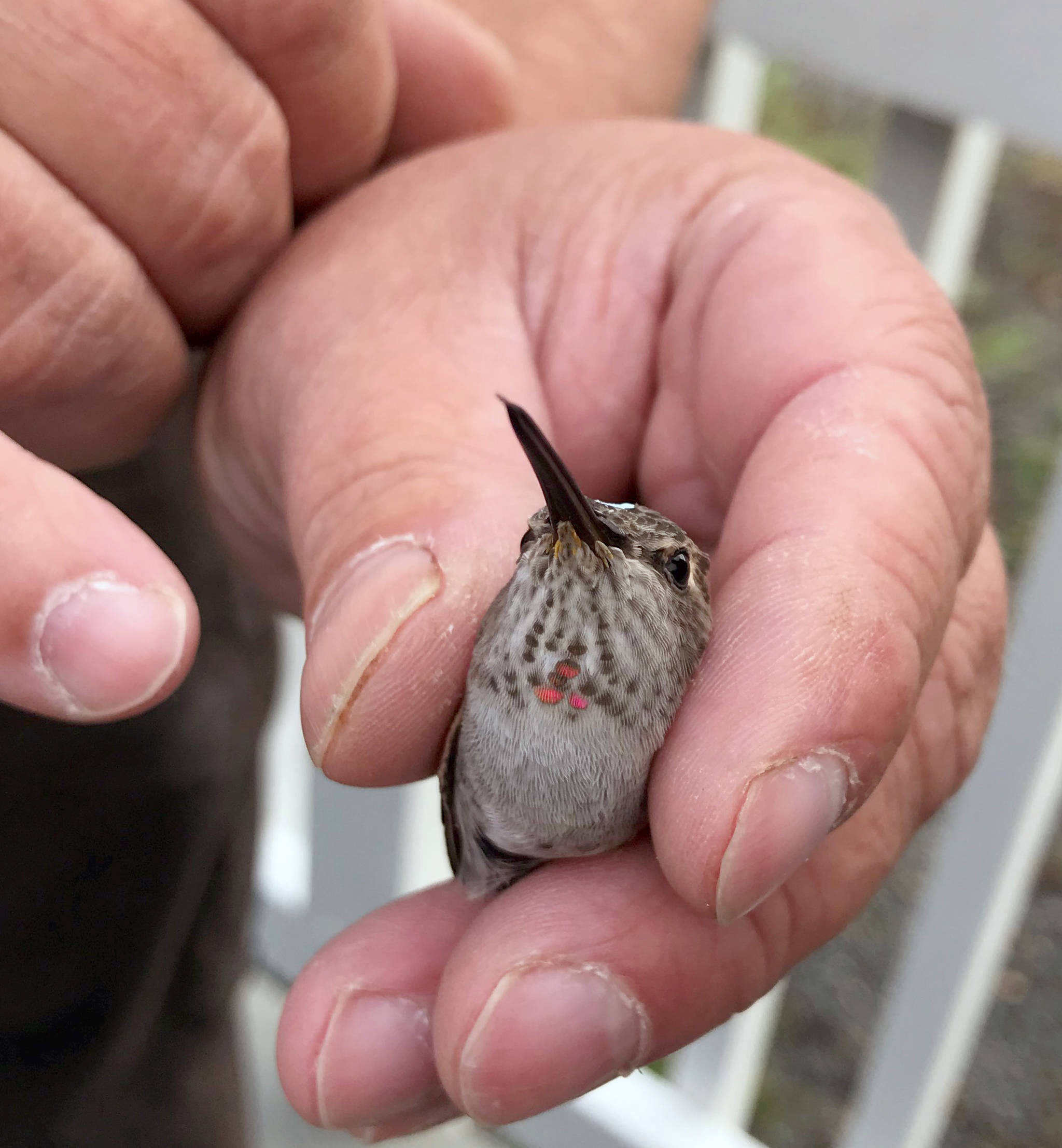In a day and age where social media seems to dominate and not always for the best reasons, I recently had the most positive outcome from a post to the Kenai National Wildlife Refuge Facebook page.
Fall is when we start seeing dispersal of Anna’s hummingbirds, a nonmigratory species. They disperse in many different directions after they leave the nest. Some of those directions may be to places inhospitable for hummingbirds, where they may eventually die.
As climate continues to warm, it becomes just bearable and one or two Anna’s make it.
Eventually, you have the right puzzle pieces and a pair find each other, both make it through the winter, and you have summer breeding. They may all get wiped out the following winter, but eventually this process leads to an actual range expansion and year-round residency.
After my post about fall colors meaning “hummingbird colors,” I received a call about a hummingbird visiting a feeder off of K-Beach Road. A short time after sending the post, I had my hummingbird trap up and was playing a quick game of cat and mouse with an adult female Anna’s hummingbird.
She was wary but, with some patience, I eventually captured and fitted her with a bracelet and band number. If she is ever captured or found again, that number will tell us when and where she was banded.
So why band hummingbirds in Alaska in fall and early winter if they are probably just going to die? It is all about that word “probably.” We don’t know the lower temperature limit for Anna’s.
They have seemingly survived in Homer and Cordova throughout the winter. We know they have made it through winters down to 8 degrees Fahrenheit. So how low can they go?
Anna’s in winter are notorious for eating lots of bugs. Presumably they eat frozen spiders and flies in the tops of spruce. Although we know their survival in winter is aided by hummingbird feeders, they do spend a lot of time away from the feeder.
The Anna’s banded last November off Cannery Road in Kenai would visit the feeder for a week and then disappear. He seemingly had not made it, then two weeks later he would show up and hit the feeder for a few days. Then he would be off again and show up three weeks later.
He did this until last seen on Christmas Eve. While the feeder provides some support, their metabolism is so high they would never leave the feeder if they were not capable of surviving on their own.
The folks who have allowed me to come to their homes often name their hummingbirds. It is a fun way to connect to them, but both families have maintained a grounded perspective.
They know there is only a slim chance these hummingbirds will make it through the winter, so they enjoy the ephemeral visits that much more.
“Tick-it” was the adult male banded in November 2018. Now in 2019 we have Sugar Petal. Could it be that Tick-it made it through the winter last year and now his future mate has arrived? Only time will tell. Tick-it is still the northernmost banded Anna’s, but he only beat Sugar Petal by one mile.
As a biologist, I am fascinated to watch processes like range expansion happen. It is even more special to be situated where species distribute themselves based on an environmental limit that determines their very existence. Anna’s hummingbird’s range spans some 3,000 miles into Mexico and the northern extreme is our backyard here on the Kenai Peninsula.
Only through banding will we be able to confirm that some of these birds are the same birds seen in previous years. It is possible that we are just seeing a new influx of dispersing birds each year and none of them are making it YET.
If you want to try your luck at attracting a late hummingbird, be prepared for a fair amount of work and window watching. Mix one part sugar to four parts water, put the solution in a hummingbird feeder, but don’t add dye or food coloring.
As we get into lower winter temperatures, the fight is to keep the solution from freezing. There are heated feeders that can be purchased online or you can engineer your own using a small wattage light bulb fitted into a container under the feeder to keep the solution from freezing.
The most important thing is to take the feeder down weekly and wash it with mild soap and water to eliminate any potential mold growth.
I will continue to track down and band any late hummingbirds that are reported. Who knows? Maybe your yard will become the new northern limit for these flying jewels. If you have any questions about setup or wish to report a sighting, contact me at 907-260-2817 or todd_eskelin@fws.gov.
Todd Eskelin is a Wildlife Biologist at Kenai National Wildlife Refuge. Find more Refuge Notebook articles (1999-present) at https://www.fws.gov/Refuge/Kenai/community/Refuge_notebook.html or other info at http://www.facebook.com/kenainationalwildliferefuge.

